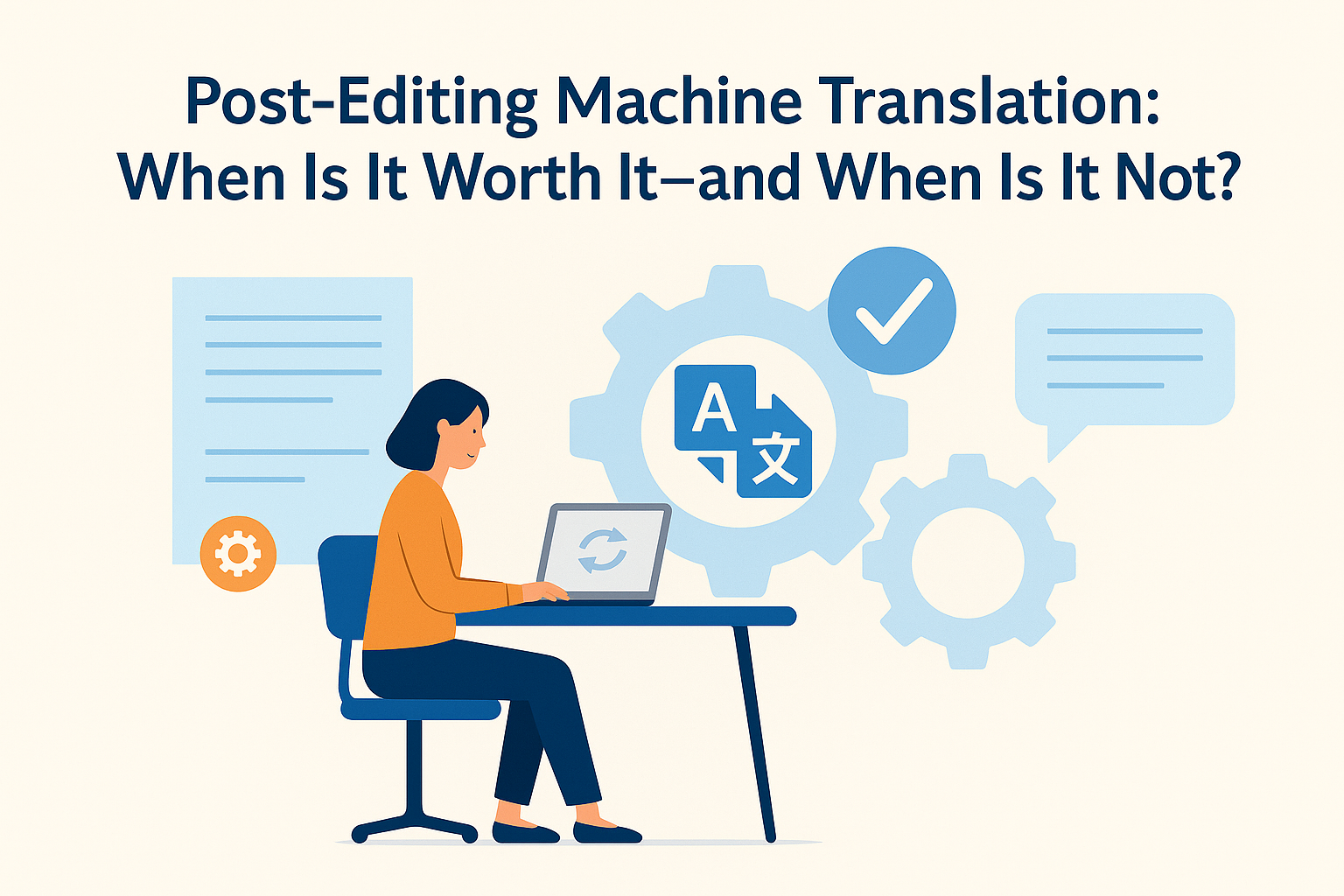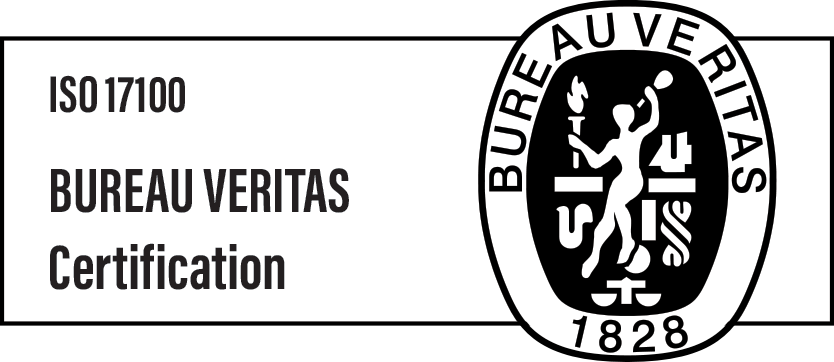Post-editing machine translation: when is it worth it—and when is it not?

Introduction: A strategic choice, not just a trend
As machine translation (MT) systems become faster, cheaper, and more widely available, companies looking to scale their global communications are increasingly turning to Language Service Providers (LSPs) for support. One of the most common options on the table is post-editing of machine translation (PEMT)—a hybrid approach that combines raw MT output with human linguistic refinement.
But while PEMT promises cost savings and faster turnaround times, it isn’t always the right tool for the job. When used in the wrong context, it can lead to rework, reputational risk, or wasted spend. This article offers practical guidance for LSP clients evaluating whether PEMT is a smart investment for their content—and when traditional human translation may still be the better choice.

When to use post-editing of machine translation?
1. Cost vs. value: when post-editing delivers real ROI
PEMT is often positioned as a cost-efficient alternative to human translation. And when conditions are right, it truly can be. For high-volume content that doesn’t demand perfect style—think product descriptions, help center articles, or internal documents—PEMT can reduce costs by up to 40–60% while dramatically accelerating delivery timelines.
However, the key variable is the quality of the initial MT output. If the raw translation is riddled with structural, grammatical, or terminological errors, a post-editor may spend more time correcting it than starting from scratch. In such cases, the supposed savings evaporate—and turnaround times can even increase.
That’s why it’s important for clients to engage their LSP in a clear discussion around:
– The type and scope of content involved,
– Expected editing effort and pricing tiers, and
– Estimated throughput compared to human-only workflows.
Bottom line: PEMT is most valuable when MT quality is strong enough to require only moderate intervention—and when content volume justifies the workflow.

When post-editing delivers real ROI
2. Defining “good enough”: aligning quality expectations
Not every translation needs to read like award-winning prose—but quality still matters. The challenge lies in defining what level of quality is “good enough” for a given project. LSPs typically offer two levels of PEMT:
– Light post-editing, where the focus is on basic accuracy, readability, and clarity. This is suitable for internal or low-risk materials.
– Full post-editing, where the goal is polished, publication-ready text that aligns with tone, terminology, and branding.
As a client, you should carefully evaluate:
– What the content will be used for,
– Who the audience is, and
– What the impact of subpar quality could be.
In many cases, a quick MT evaluation by your LSP can help determine whether PEMT will meet your quality needs—or whether a human-first approach is safer.
Bottom line: If tone, brand voice, or cultural nuance are essential, full human translation may be a better fit.

Where PEMT shines
3. Industry suitability: where PEMT shines (and where it doesn’t)
PEMT is not one-size-fits-all. Some industries and content types naturally lend themselves to this workflow, while others demand more care and creativity.
Best-fit scenarios for PEMT include:
– E-commerce product listings,
– Knowledge base articles,
– Software UI strings and documentation,
– User reviews and customer service interactions.
These use cases often involve repetitive, structured content with relatively low creative or legal risk. PEMT allows companies in tech, travel, and retail to scale localization efforts efficiently.
Use with caution for:
– Legal contracts,
– Marketing campaigns,
– Medical or financial content,
– HR and compliance documentation.
Here, the stakes are higher. A mistranslation can damage trust, cause compliance issues, or misrepresent your brand.
Bottom line: Ask your LSP where PEMT has succeeded with similar clients in your sector—and where it hasn’t.
4. Making the decision: what to discuss with your LSP
To determine whether PEMT is right for a particular content stream or project, LSP clients should openly discuss the following with their provider:
– What is the content’s purpose and who will read it?
– What quality level is acceptable and what risks are tolerable?
– What’s the budget, timeline, and expected volume?
– Do you have any translation memories (TMs), glossaries, or style guides to support consistency?
– Can the LSP run a sample MT test to evaluate editability before scaling?
Leading LSPs also offer custom-trained MT engines that can be tailored to your brand and domain. This increases the chances that PEMT will deliver both quality and efficiency—especially when combined with a continuous feedback loop.
Bottom line: PEMT works best when built on a foundation of clear communication, upfront analysis, and realistic expectations.
PEMT is a strategic partnership, not a shortcut
Post-editing machine translation is not simply a cheaper way to translate—it’s a workflow decision that must align with your goals, constraints, and content strategy. When used wisely, PEMT enables LSP clients to localize faster and more affordably without sacrificing quality. But when used blindly, it can introduce inefficiencies and reputational risk.
The most successful outcomes happen when clients and LSPs collaborate early to define success metrics, assess MT quality, and tailor workflows accordingly. In the end, PEMT isn’t just about what’s possible with technology—it’s about making informed, strategic choices that serve your brand and your audience.

